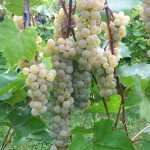Changes have been made to the Vermont Use Value Appraisal Program (Current Use) that guides the taxation of land and buildings used for agriculture, forestry and conservation.
Click this link for a resource sheet that explains the new changes: Changes in VT Current Use Tax Program _July 2015
Key changes include:
- A new calculation for the Land Use Change Tax (LUCT) (beginning Oct. 2, 2015)
- A temporary “easy-out” period in which landowners can remove a parcel, or portion of a parcel, without paying the full LUCT liability (between July 1 and Oct. 1, 2015).
- A new annual requirement for owners of agricultural lands and buildings to certify in writing on or before September 1 of every year that all enrolled agricultural land and buildings meet the requirements for enrollment at the time of the certification (form will be available in August).
- Authority given to Agency of Agriculture, Food and Markets to direct the Vermont Department of Taxes to remove agricultural land and farm buildings from the Current Use Program when the land or buildings are used by a person who has violated water quality requirements (beginning July 1, 2015).

